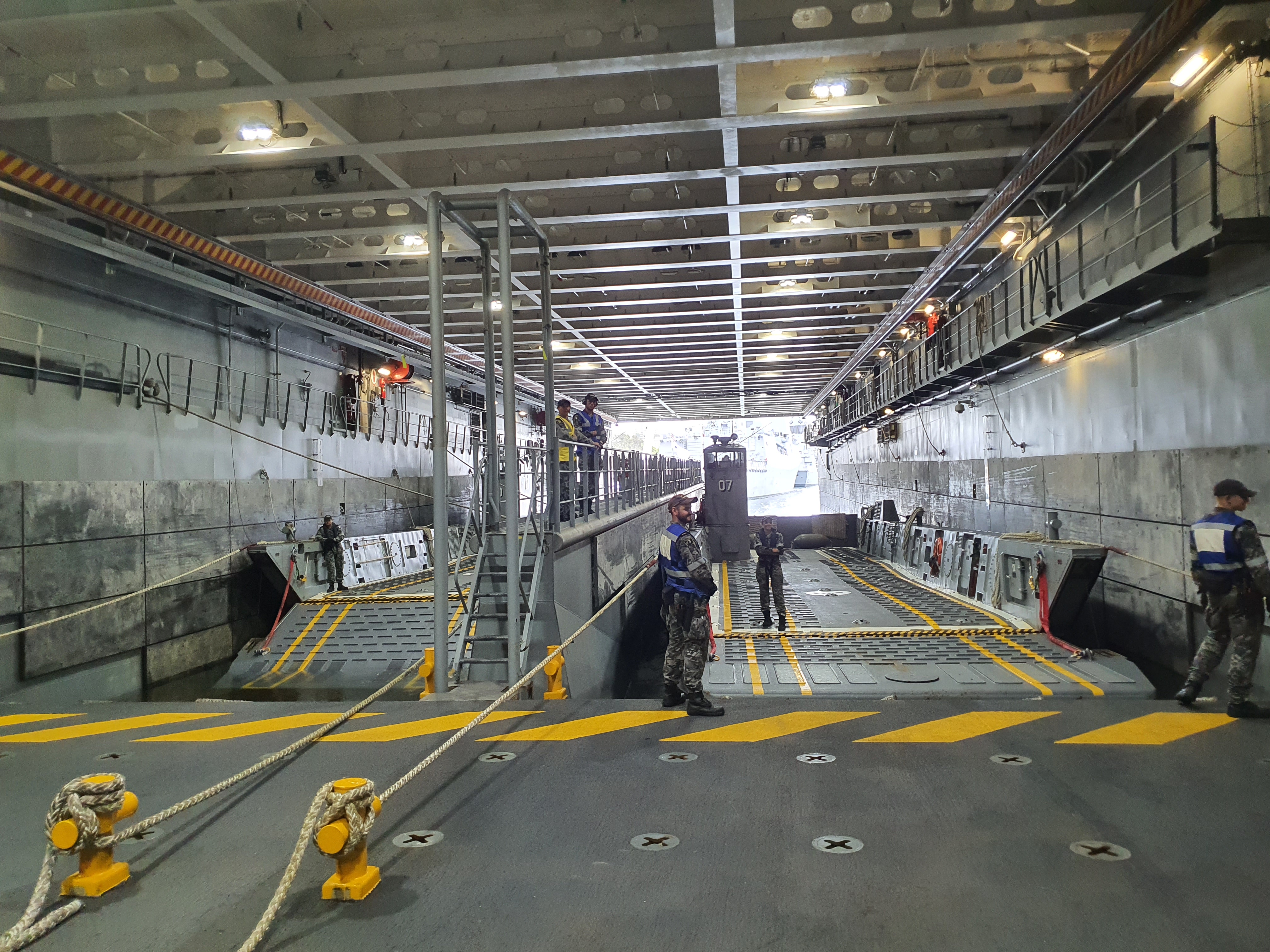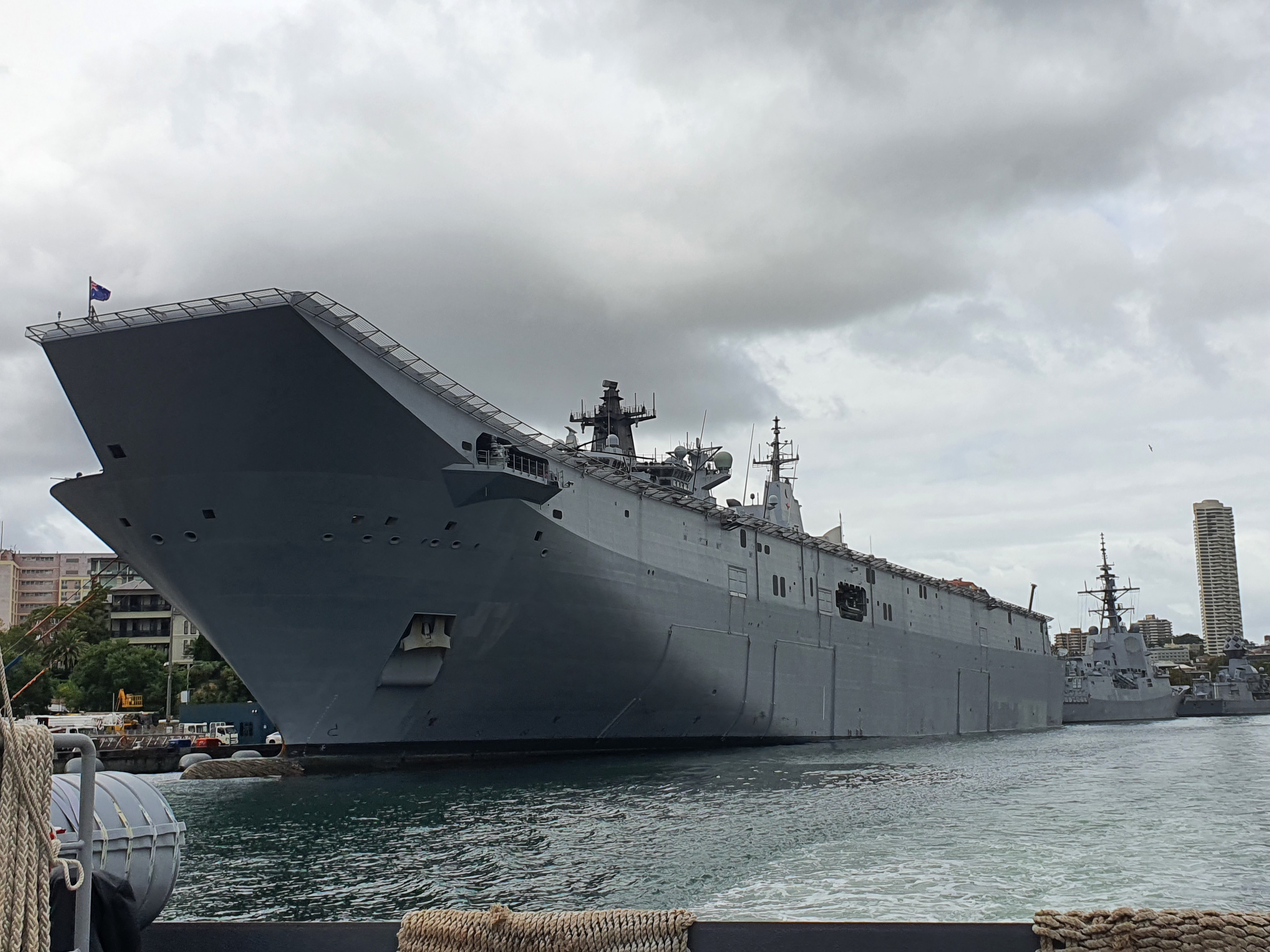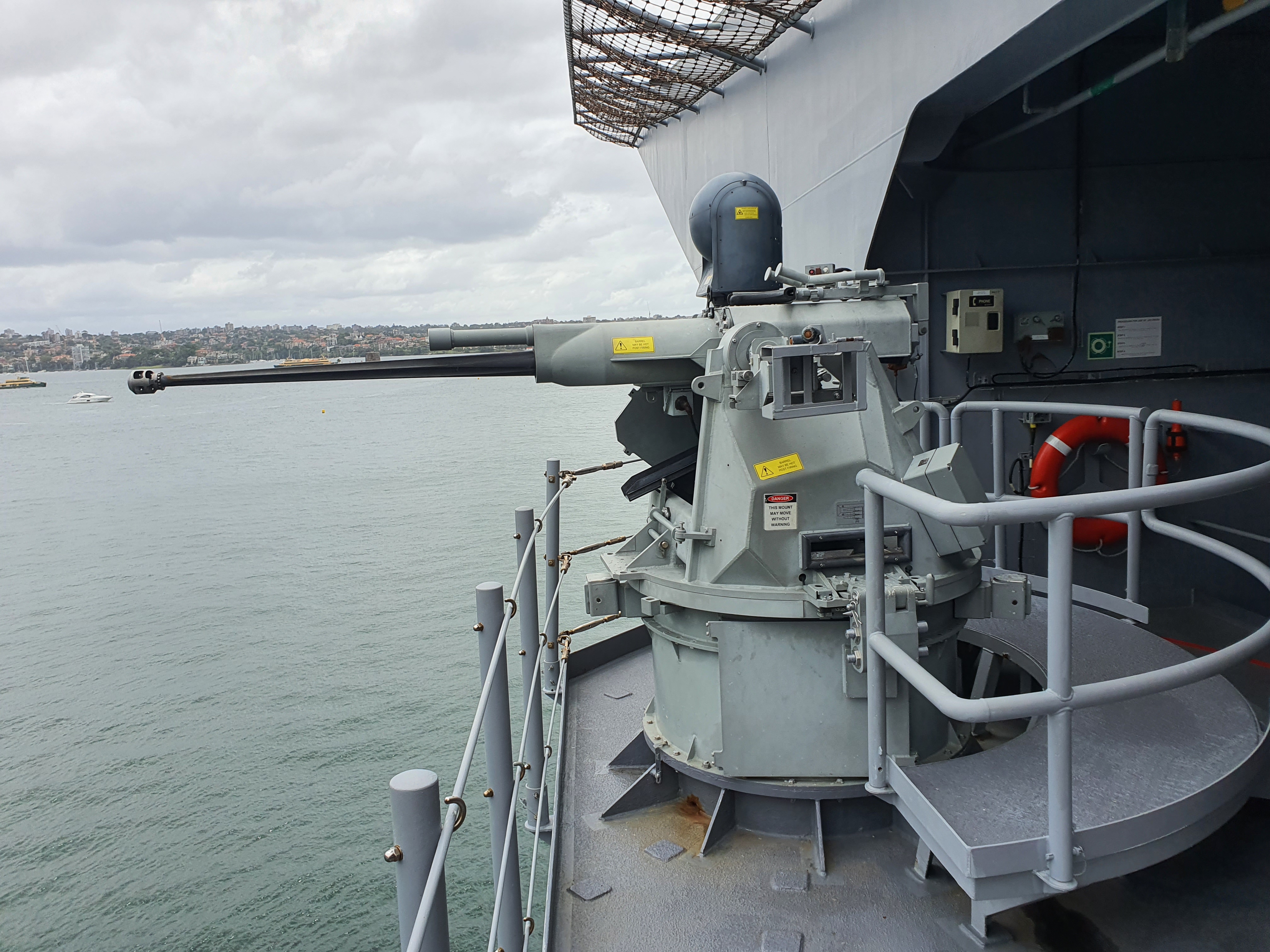Defence Connect sat down with HMAS Canberra Commanding Officer Captain Jace Hutchison for the start of Navy Week, as the Royal Australian Navy opens naval bases to the public.
To continue reading the rest of this article, please log in.
Create free account to get unlimited news articles and more!
Navy Week runs from 23 February to 1 March, preceding the Royal Australian Navy’s official birthday on 1 March.
CAPT Hutchison has previously posted as the executive officer of HMS Brocklesby on Royal Navy Exchange, commanding officer of HMAS Huon, J5 of the Australian Amphibious Task Group, SO1 Counter Network Strategies within Force Integration Division, and as the executive officer of HMAS Adelaide. He originally graduated at the Royal Australian Naval College in 1999 and qualified as a mine warfare and clearance diving officer in 2002.
We asked for his expert insight into the value of autonomous landing and patrol craft being trialled internationally, such as the US Navy’s USNS Apalachicola Spearhead Class expeditionary fast transport.
“I think that there’s efficiencies to be gained in the use of automation, in the projection of stores and equipment ashore,” CAPT Hutchinson said.
“If you take humans out of that loop then we’ve got the ability to operate continuously in that automated type of concept.
“However, in terms of taking personnel out of harm’s way, I don’t think you would gain as much there because at some point after (you’re) actually carrying personnel or going to be met by personnel on the other end (on shore).”

The Canberra is the lead ship of two Canberra Class amphibious assault vessels, the largest ships ever constructed for the Royal Australian Navy.
Canberra Class ships are able to supply air-land-sea amphibious deployment for the RAN and support a landing force of over 1,000 embarked personnel with weapons, ammunition, vehicles, and stores.
The HMAS Canberra can ferry humanitarian or disaster relief deliveries, military supplies or equipment from ship to shore with LCM-1E landing craft and helicopters.
It has four main decks including space for heavy and light vehicles, accommodation, medical facility with pathology and radiology services, aircraft hangar and rotary-wing aircraft deck. There is also equipment elevators and an internal personnel elevator, the only one of its kind in the RAN. It also houses an armament of four 25mm cannons.

We also asked CAPT Hutchinson for his thoughts on the emerging unmanned aerial and water vehicle industry, and their application to Navy ships.
“From my point of view, I would be a proponent of that type of (unmanned) technology used in our operations,” he said.
“There are parts of Navy that are looking at that very closely and I anticipate that as that technology matures, we’ll be developing those types of systems and then progressively rolling those out into the fleet or into specialist units within the Navy.”

And what about CAPT Hutchinson’s predictions for the Defence Strategic Review, which is expected to be handed down later this year?
“I can’t really comment on that. Like the rest of the nation, we’re waiting for the government to hand down the report,” he said.
Members of the public will be able to tour HMAS Encounter, HMAS Cairns, HMAS Penguin, HMAS Moreton, HMAS Cerberus, a Fleet Base East Open Day; watch the St Andrews Band Call, RAN Band Tasmania Rock Band, and Soundwaves on March 2023; and join the Relay for Life Hobart event.
A list of community events and locations for Navy Week can be found at: www.navy.gov.au.

 Login
Login







